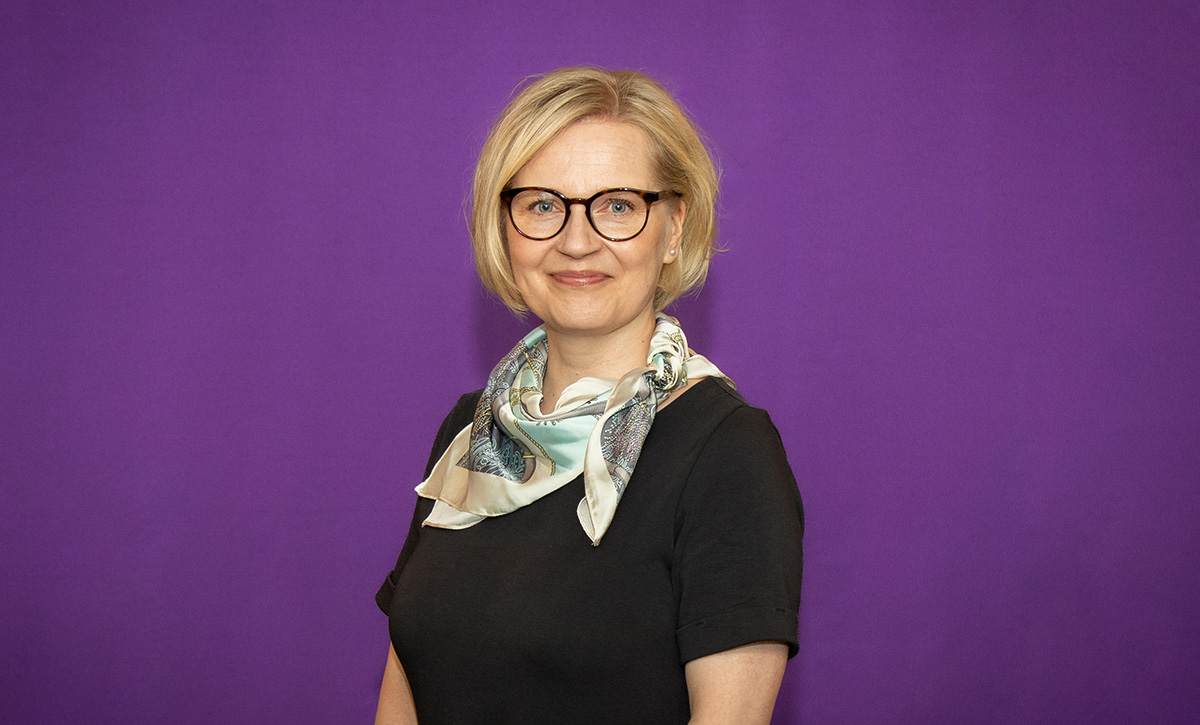We develop for working life
In accordance with our strategic objectives, we continued active development of education contents and structures. We gathered our working life partners to discuss competence needs of future working life and different fields as well as our degree structures. TAMK’s pedagogical principles and badge-based competence development directed degree programmes’ curriculum reforms and pedagogical decisions. The service design process, which started in 2021, continued in the Education and Learning Services.
Students returned to contact teaching in the spring and it is again delightfully lively on campuses. The leaps made in using digital technology on courses, pedagogy and student services during the pandemic can however be seen in the everyday life of our community.
In my opinion, learning and teaching in my degree programme have been good. The return to contact teaching went well and it is good that some teaching is still organised remotely. It gives flexibility for studying and enables working alongside studying. – Annual feedback by a business administration student
Still second most popular
Students’ studies progressed quite well. The proportion of bachelor’s degree students who graduated during the normative duration of studies rose by 2.4%. Degree students completed more credits than in the preceding years – over 454,000 credits altogether.
We did not reach our quantitative degree target. We had 1,678 bachelor’s degree graduates, which was 392 degrees below our target level. We however exceeded our target levels in master’s degrees and professional teacher educations.
TAMK is still the second most popular university of applied sciences in Finland. In bachelor’s degrees, we had four applicants per study place. Our number of students grew in both bachelor’s and master’s degree programmes compared to 2021. We had a total of 10,940 bachelor’s and master’s degree students and 483 students in professional teacher educations.
We have international degree programmes in all our education fields. Our number of international degree students grew significantly, which is in line with our strategic focus areas. The number grew from 677 to 901 students. Two thirds of applicants came from outside the EU/EEA.
Towards working life, communality and wellbeing
TAMK students’ labour market situation was good at graduation. Based on a student feedback survey, almost 80% of bachelor’s degree graduates had a job. 90% of master’s degree graduates told that they were working. 69% of graduates found a job in the Tampere Region.
50% of foreign bachelor’s degree graduates were employed and 69% of them in Finland. 76% of foreign master’s degree graduates had a job and 53% of them had it in Finland.
We participate in Talent Boost with the aim of promoting international students’ academic progress, employment and integration into the society.
As a national SIMHE higher education community, we developed counselling services and language education for immigrants. In addition, we are implementing a bilingual pilot Degree Programme in Nursing (TOKASA). It aims at supporting students in achieving the Finnish language skills needed for the profession by the time they graduate.
We developed wellbeing and study-related support services for the universities community’s students in the TreSilienssi project funded by the Ministry of Education and Culture. The project formed the basis for the Parvi concept which gathers together student services related to studies and wellbeing.
It is good that Parvi exists. It just needs more visibility that you are there and help. – Feedback on student wellbeing
Text: Sanna Wesanko, Vice President, Education
Editing: TAMK Communications
Photo: Saara Lehtonen

